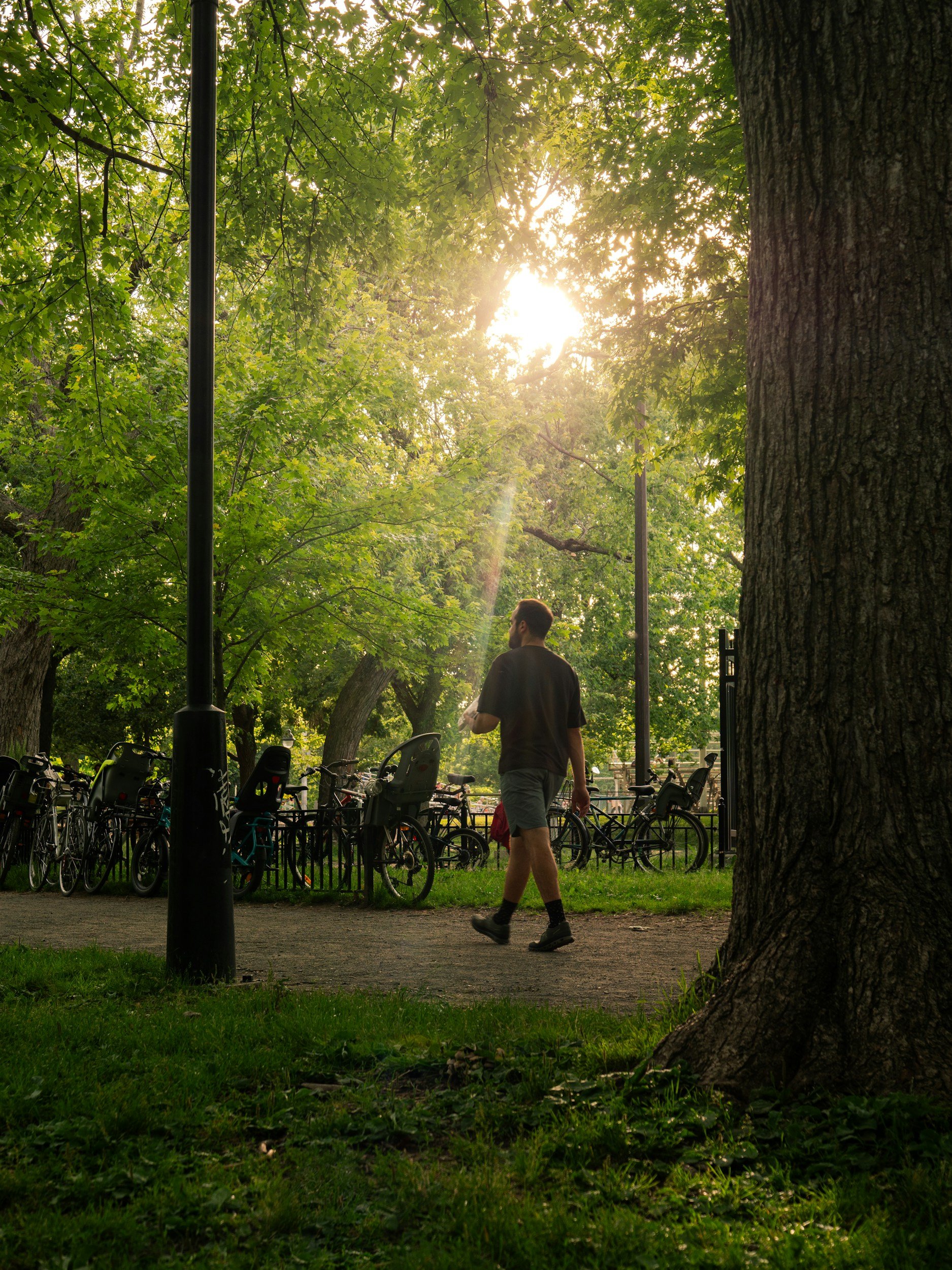The Light-Hormone Connection—And Why Summer Is the Best Time to Reset
Why Light Matters More Than You Think
If you're struggling with energy, mood swings, or restless sleep—your light exposure may be partly to blame. In our screen-saturated, indoor-centered world, we’ve drifted far from the natural light cues our bodies were designed to follow. Artificial lighting, blue light from devices, and too little time outdoors all can disrupt our hormonal rhythm. The good news? Summer’s longer days give us the perfect opportunity to reset.
The Light-Hormone Connection
Circadian Rhythms 101
Our bodies run on a roughly 24-hour clock called the circadian rhythm, and light is its master control switch. This rhythm regulates hormone secretion, sleep-wake cycles, metabolism, and more. Morning sunlight triggers a cascade of hormonal signals to wake us up and energize us. Evening darkness cues the body to wind down and prepare for restorative sleep.
Cortisol and Morning Light
Cortisol is often demonized, but it plays a vital role when properly timed. Natural morning light triggers a healthy cortisol surge, helping you feel alert, focused, and ready to take on the day. It also helps regulate your appetite, reduce inflammation, and stabilize blood sugar.
Melatonin and Evening Light
Melatonin is your body’s sleep hormone, and it’s released when your brain detects darkness. Too much exposure to artificial light in the evening—especially blue light from screens—delays melatonin production and disrupts sleep. Dimming lights and avoiding screens after sunset can dramatically improve sleep quality.
Light and Mood: It’s Not Just in Your Head
Light doesn’t just affect sleep—it profoundly impacts mood. Bright light stimulates serotonin and dopamine, neurotransmitters that regulate mood, motivation, and a sense of well-being. Lack of sunlight can lead to symptoms of depression or seasonal affective disorder (SAD), even in summer if you’re stuck indoors. Getting outside regularly can act as a natural antidepressant—no prescription required.
Summer Sunlight: Nature’s Free Hormone Balancer
Why Summer is Your Circadian Reset Button
Longer days mean more chances to sync your internal clock with natural light-dark cycles. It’s easier to rise with the sun and wind down as it sets. This alignment supports hormone balance, improves energy, and enhances sleep quality.
Morning Ritual
Aim for 10–15 minutes of direct, unfiltered sunlight within 1-2 hours of waking. Do it while sipping your coffee, walking your dog, or simply stepping outside. Bonus points for grounding—bare feet on the grass, sand, or dirt.
Evening Wind-Down
Spending time outside as the sun sets supports melatonin release and prepares your body for rest. If you can’t catch the sunset, try lowering indoor lights and ditching screens an hour before bed.
Practical Tips to Harness Light for Better Hormones, Sleep, and Mood
Step outside within 30–60 minutes of waking
Avoid sunglasses for the first 10–15 minutes outside (unless medically necessary)
Block blue light in the evening (use glasses, apps, or red-tone lighting)
Replace harsh overhead bulbs with warm-tone lighting after dark
Keep your sleep space dark—blackout curtains and no glowing devices
The Functional Medicine Perspective
Light isn’t just a wellness trend—it’s foundational biology. In functional medicine, we view hormone balance as more than lab results; it’s a reflection of your lifestyle inputs: sleep, movement, nutrition, stress, and yes—light. Supporting your body’s natural rhythms through light exposure can complement everything from HRT to adrenal support protocols. Want to enhance the effect? Add in magnesium, adaptogens, and evening routines that promote parasympathetic tone.
Final Thoughts: Let the Light In
Your hormones don’t need more chaos—they need rhythm. Summer is the ideal time to reset your biological clock, using light as your ally. Before you add another supplement to your cart, try starting your day with the sun. It just might be the simplest—and most powerful—change you make this season.
Want support for your hormones and sleep?
Book a consult or explore our Summer Reset Program at STAT Wellness Charleston. Let’s harness the power of light—together.
Sources
Circadian Rhythms & Light Regulation
National Institute of General Medical Sciences (NIGMS)
"Circadian Rhythms"
https://www.nigms.nih.gov/education/fact-sheets/Pages/circadian-rhythms.aspx
Harvard Medical School – Division of Sleep Medicine
"Blue light has a dark side"
https://www.health.harvard.edu/staying-healthy/blue-light-has-a-dark-side
Cortisol and Morning Light
Journal of Clinical Endocrinology & Metabolism
Scheer FAJL, et al. Adverse metabolic and cardiovascular consequences of circadian misalignment.
https://doi.org/10.1210/jc.2008-0846
Melatonin Suppression from Artificial Light
Sleep Research Society
Chang AM, et al. Evening use of light-emitting eReaders negatively affects sleep, circadian timing, and next-morning alertness.
https://doi.org/10.1016/j.pnas.2014.12.035
Light and Mood (Serotonin, SAD)
National Institute of Mental Health (NIMH)
"Seasonal Affective Disorder"
https://www.nimh.nih.gov/health/topics/seasonal-affective-disorder
Lam RW et al., 2006. Light therapy for depression: a systematic review.
https://pubmed.ncbi.nlm.nih.gov/16478576/
Functional Medicine Perspective
Institute for Functional Medicine (IFM)
Articles on circadian rhythm, hormonal regulation, and lifestyle-based interventions
https://www.ifm.org/news-insights/

